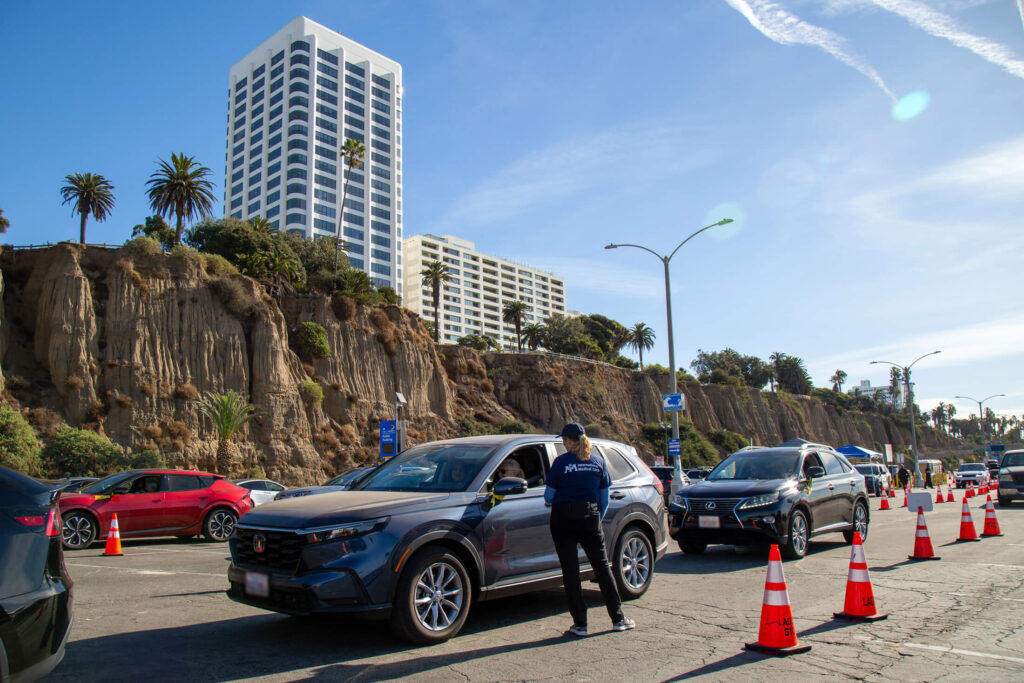It’s a warmer-than-normal January afternoon in Santa Monica, California. On the side of the road, in a parking lot temporarily serving as the re-entry point to the scorched Palisades neighbourhood, members of International Medical Corps’ mental health team are approaching residents to see how they’re doing and provide resources to support their emotional recovery. Kimberly Carmody, Behavioural Health Lead for our wildfire response team, says, “I met someone yesterday who filmed his escape from the fire. We had him pull to the side because he really needed to share his story with somebody. I think that was a part of his mental health processing—being able to tell his story. We watched the video together twice. Before then, he hadn’t seen it himself yet.”
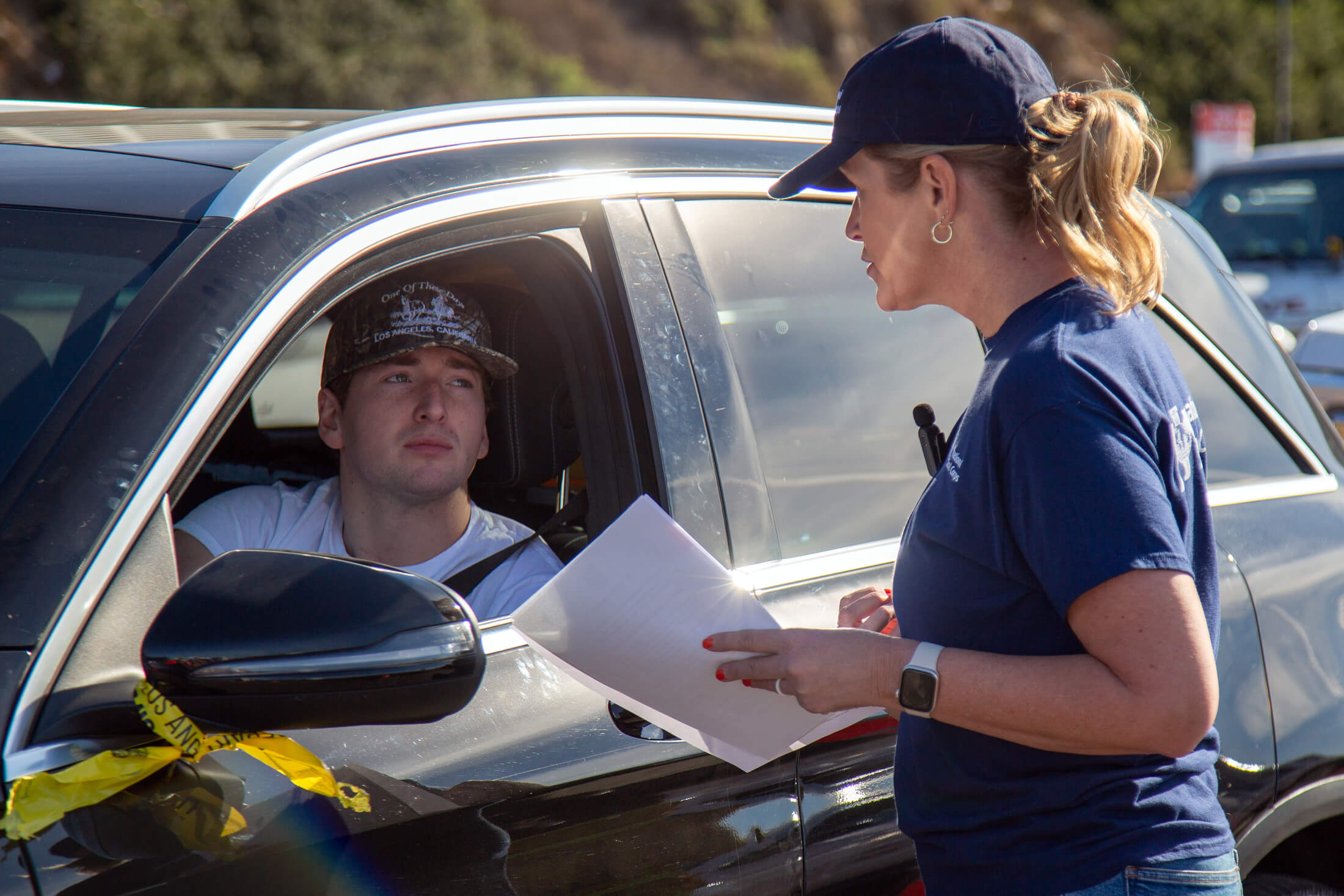
Many residents of Los Angeles—including some staff members of International Medical Corps—are still sharing stories of displacement, damage and recovery. For nearly the entire month of January, seven fires spread across Southern California, burning 90 square miles, razing entire neighbourhoods, destroying houses, schools, community centres and places of worship, and leaving behind toxic debris.
Kimberly grew up in Pasadena, and found it difficult to see the changes to her childhood community. “One of the first places we visited during the response was a church where I was a flower girl,” she says. That church was serving as a shelter in January for those displaced by the fire—almost every nearby neighbourhood was burnt beyond recognition.
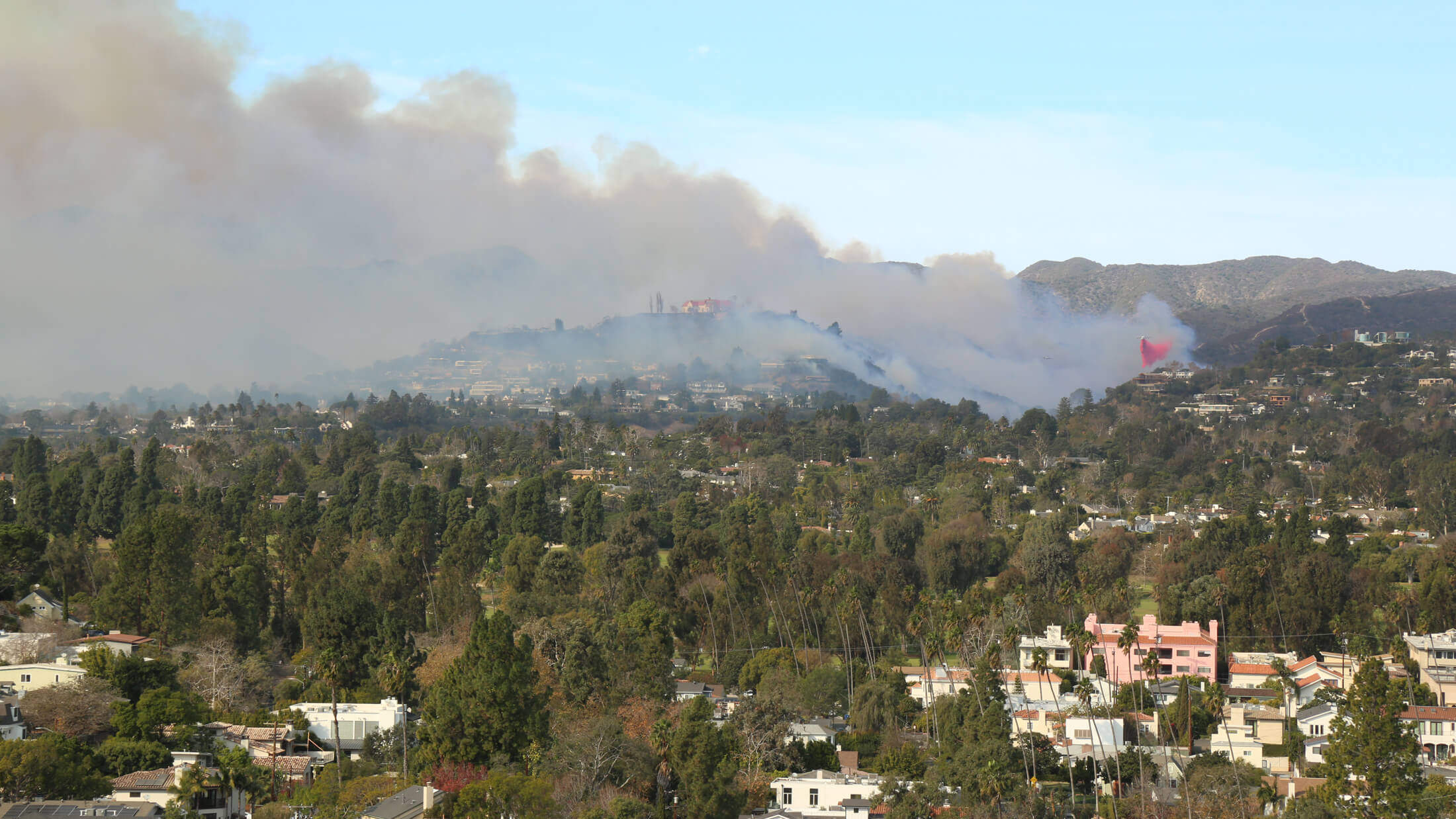
On January 31, firefighters finally contained the last of the flames. But there is still a lot of work to do. “The damage is intergenerational,” says Kimberly, who spoke with nearly 2,000 people whose lives are now in disarray. Many lost not only their own belongings but everything they inherited from their parents and grandparents—including their houses. “For them, it was like losing the American dream. I don’t know how they’ll be able to get that back again,” she says, fighting back tears as she recalls her conversations with survivors in Altadena.
Although most neighbourhoods affected by the fire are now open to public access for community members, the fires have destroyed many houses. In the hardest-hit areas, enormous amounts of chemical and toxic debris remain, leaving entire communities uninhabitable. Many Californians—including the people providing care and aid—are in significant need of mental health care.


“Most of our first responders live and work in this community,” Kimberly says. “Their children, families, neighbours, schools—it’s all been affected.” She explains that when a disaster demolishes your entire neighbourhood and overturns life as you knew it, even the helpers need help: “It is so important that we all take a few minutes for self-care, to set boundaries and to show one another that we’re here as a community.” As part of our efforts to help first responders, International Medical Corps has provided housing allowances to a local health centre network serving low-income community members, enabling 15 frontline healthcare workers who lost their homes in the fires to find transition housing—and keep caring for the community.


International Medical Corps has been providing medical care in shelters set up for people displaced by the Palisades and Eaton fires since almost the beginning of the response. Yet as important as medical care is, “mental health care needs to be a part of the conversation from moment one,” Kimberly says. “When we’re talking about humanitarian response, psychological and physical safety are a big deal. I hope that mental health, in this sector, becomes a part of that conversation more and more.” Over the course of the response, International Medical Corps has deployed 50 medical and mental health professionals—many of whom are California and Los Angeles locals—to provide critical medical and mental health care in shelters, distribution centres and re-entry points.
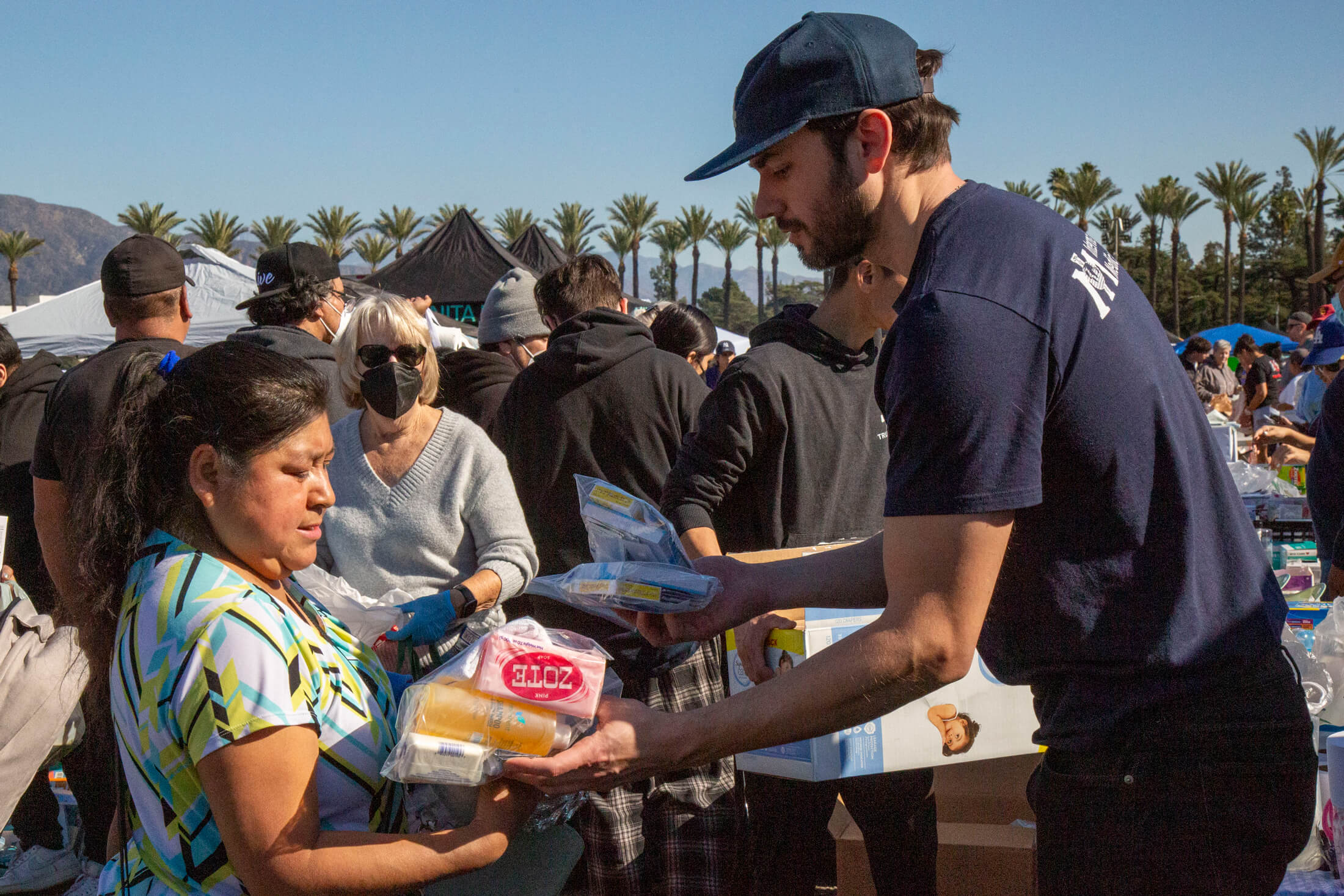
“You can feel how much you help people,” Kimberly says. “You can see the relief when someone learns there’s an answer—that there are resources.” Once her deployment began, Kimberly called upon her experience working with veterans who were struggled with post-traumatic stress disorder. In the first days of our response, she created a way for people to access online mental health resources privately and on their own time. “It’s so helpful because they can get info on their own rather than calling someone.”
Our mental health and psychosocial support (MHPSS) team has distributed fliers with these resources to people displaced from neighbourhoods across the Los Angeles area and continues to provide community-based services to residents.
Our team has so far provided medical services to nearly 1,000 people adversely affected by the fires, and has conducted more than 1,000 mental health consultations and reached more than 2,800 people through community outreach, offering medical and mental health services in both English and Spanish.
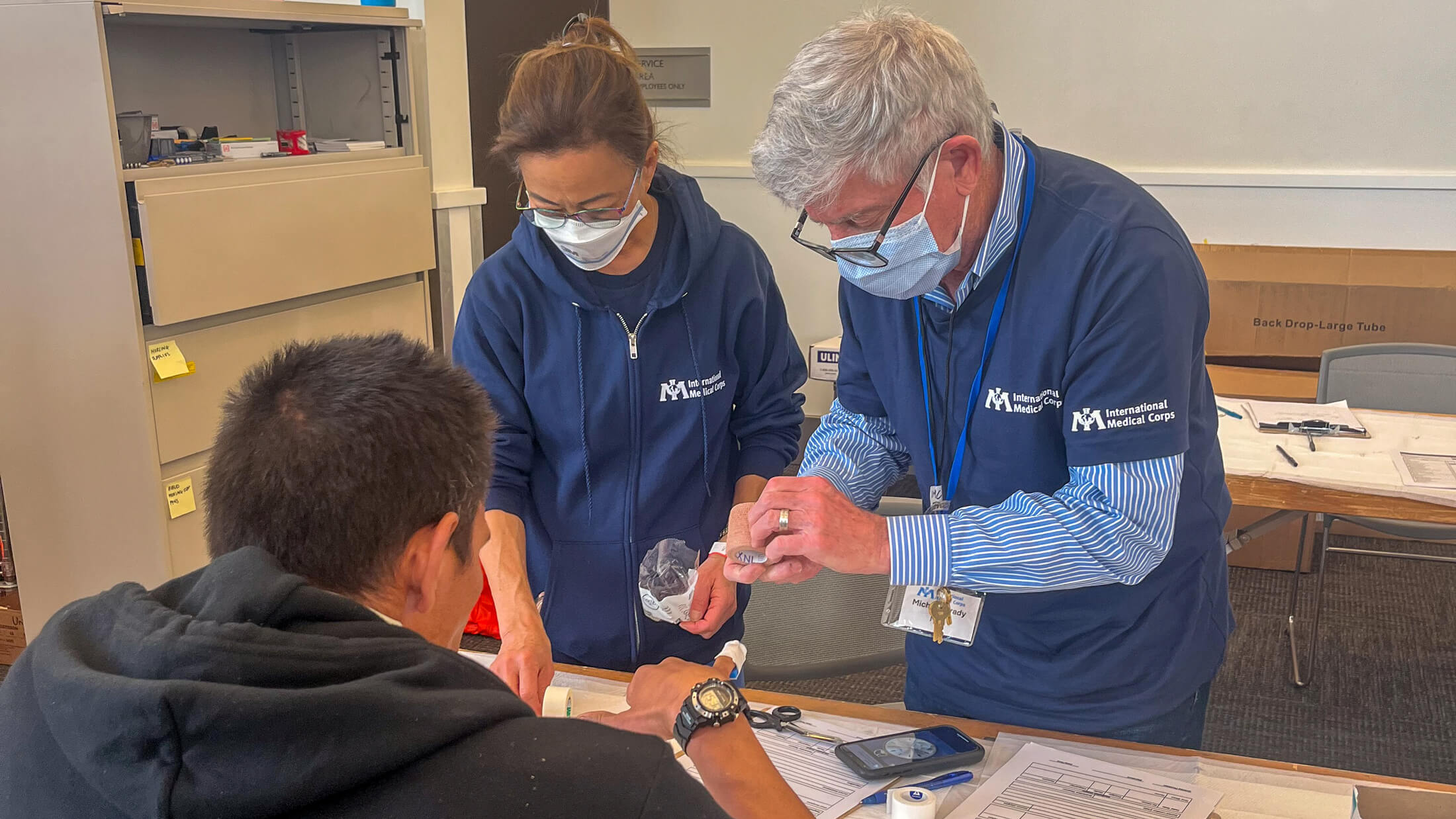
Medical supplies are also an important part of any response effort. International Medical Corps has distributed relief and response supplies to 13 different sites and partners, including shelters, federally qualified health centres (which provide medical services to low-income and other vulnerable populations), community-based organisations, local nonprofits and government entities. Across the entire response, our teams have delivered more than 39,000 hygiene items, 7,900 medical supplies, 190 air-quality items, 35,800 KN95 or N95 face masks, and 4,170 first-aid and wound-care kits, among other supplies.
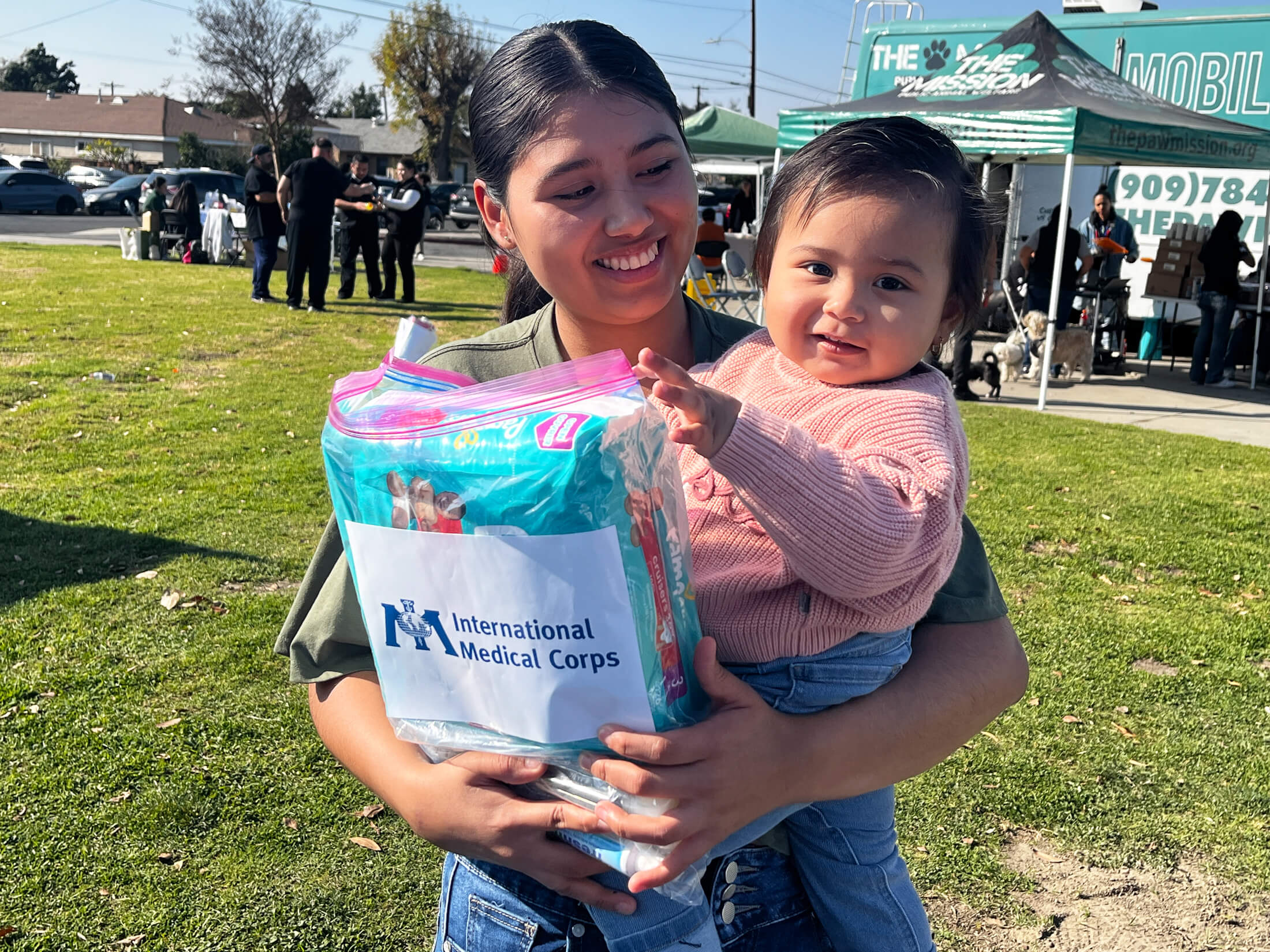
As the fires have been controlled and response efforts have begun to wind down, efforts to transition displaced residents out of the shelters has been causing significant anxiety, as many people staying in shelters still do not have replacement housing, and have a continued need for mental health support. A global humanitarian organisation, International Medical Corps plans to support recovery efforts in our hometown for the weeks and months to come, and will continue to work closely with the Red Cross, FEMA, the Los Angeles Department of Mental Health and the Los Angeles Department of Public Health to care for residents affected by the fires.
Through the combination of medical and mental health care we’re providing, “we are giving people a next step,” Kimberly says. Our work also has helped people understand that their experience of pain and distress was an entirely natural response to the threat the fire posed to their homes and safety. Going forward, Kimberly hopes to see local communities rebuild from the ground up. “Outsiders can’t do it all. We have to call upon our own strength to recover.”
To keep up to date on International Medical Corps’ work to help communities facing crisis around the world, sign up for our email list.
